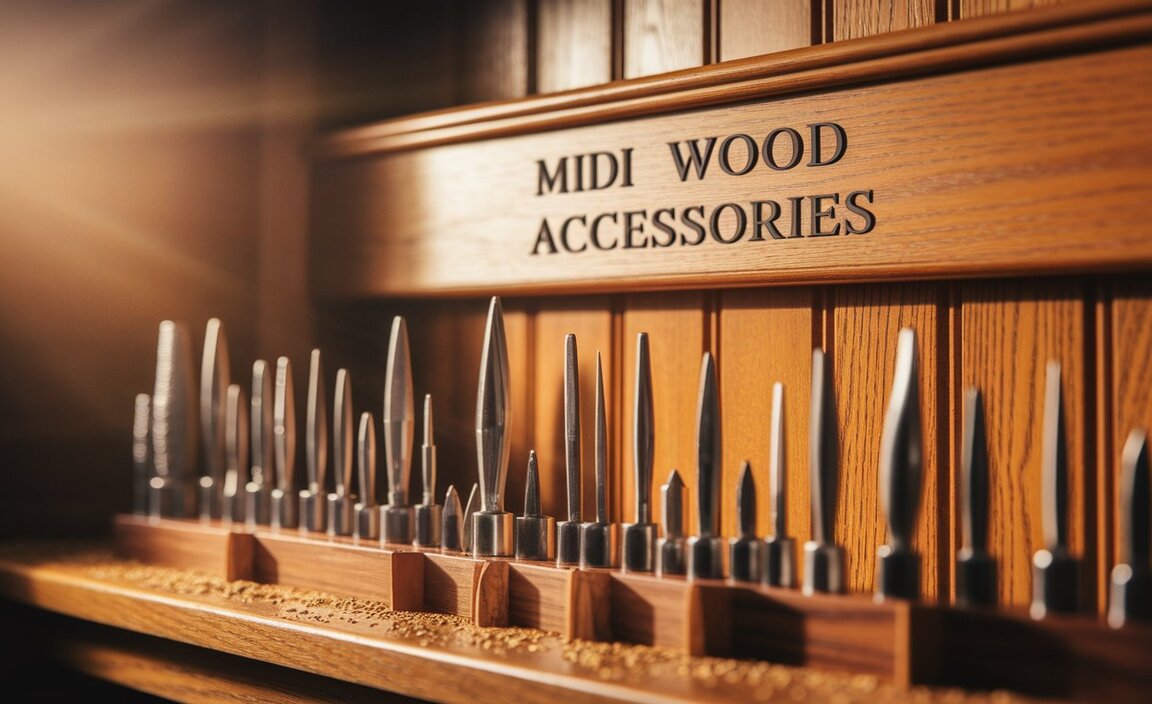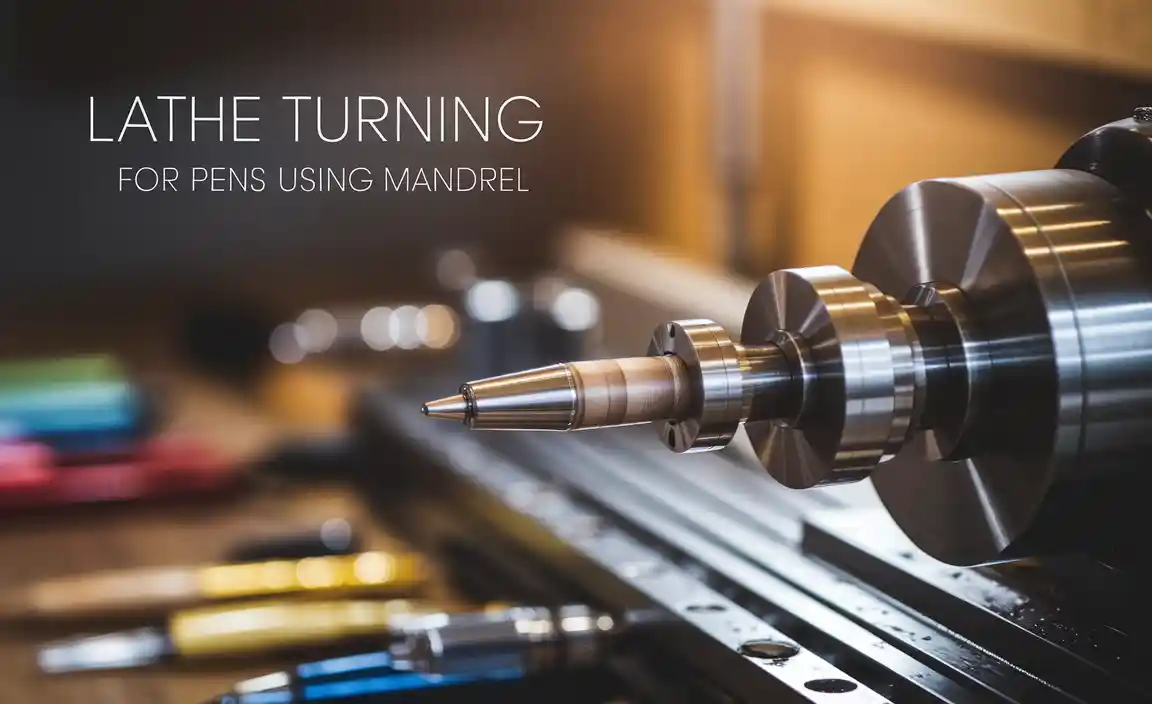Quick Summary:
A facing tool for a lathe is crucial for creating flat, smooth surfaces on the end of a workpiece. This guide breaks down what facing is, the best tools for the job, how to use them safely, and tips for getting perfect results every time, making it essential for any beginner machinist.
Welcome to Lathe Hub! Are you looking to get a perfectly flat end on your projects? Maybe you’ve tried before and ended up with a lumpy or uneven surface? Don’t worry, it’s a common hurdle for beginners. Facing the workpiece is a fundamental skill on any lathe, and with the right approaches and tools, you’ll be creating beautiful, flat faces in no time. This guide will walk you through everything you need to know about facing tools, how to choose them, and how to use them effectively. Get ready to make your projects look amazing!
What Exactly is “Facing” on a Lathe?
Facing is a machining operation performed on a lathe to create a flat and smooth surface on the end of a rotating workpiece. Think of it like giving the end of your project a perfectly level haircut. This is incredibly important for many reasons:
- Accuracy: A flat face ensures that when you mount your workpiece, it sits flush against a chuck, collet, or fixture. This is vital for accurate subsequent operations.
- Aesthetics: Let’s face it, a neat, clear surface looks much better than a rough, uneven one.
- Functionality: For parts that need to mate with other components, a flat face ensures proper contact and sealing.
- Preparation: It prepares the workpiece for other operations like drilling or boring in the center.
Without proper facing, your finished parts can be wobbly, inaccurate, and just don’t look professional. It’s one of those basic but essential skills that every lathe operator should master.
Understanding Facing Tools for Your Lathe
When we talk about a “facing tool for a lathe,” we’re usually referring to a type of cutting tool specifically designed to remove material from the end face of a spinning workpiece. These tools are mounted in the tool post of the lathe and fed radially, from the outside edge towards the center, or sometimes in the opposite direction.
There are a few main types of tools you’ll commonly see or use for facing:
1. Standard Lathe Turning Tools (with Facing Technique)
Believe it or not, your basic lathe turning tool can be used for facing! The key is how you hold it and how you feed it. You can use:
- Side Cutting Tools: Many diamond-shaped or square-nosed turning tools can be angled in the tool post to perform a facing cut. The trick is to set the tool so its cutting edge is perpendicular to the lathe’s bed and you feed it from the outer diameter towards the spindle.
- Right-Hand or Left-Hand Turning Tools: Depending on the direction of your lathe’s spindle rotation and the side you are facing, you might find it easier to use a specifically designed right-hand or left-hand turning tool.
2. Dedicated Facing Tools
These are tools designed with a geometry that makes surfacing the end of a workpiece more efficient and easier to control. They often have a larger side cutting edge and specific relief angles to prevent rubbing and chatter.
- Round Nose Tools: While primarily for profiling, a strategically positioned round nose tool can be used for facing, especially on softer materials or for roughing. However, they can leave a stepped finish that requires a secondary flat tool or sanding.
- Specialty Facing Tools: Some manufacturers offer tools specifically labeled as “facing tools” that might have an angled cutting head or a unique insert geometry optimized for surfacing end work.
3. Parting Tools (for small workpieces)
While primarily for cutting a part off, a parting tool can be used to face very small diameter workpieces or when you need to face right up to a chuck’s jaw (though extreme caution is needed!). Their thin profile means they can get into tight spots. However, their tendency to dig in makes them less ideal for general facing.
4. Inserts vs. Solid Tooling
Modern machining often uses tools with replaceable carbide or HSS (High-Speed Steel) inserts. Facing tools come in both forms.
- HSS (High-Speed Steel): These are more traditional, can be ground to custom shapes, and are often more forgiving for beginners. They are also less expensive for initial setup.
- Carbide Inserts: These are much harder and can cut faster and last longer, but they are more brittle and can be more prone to chipping if abused. They require specific tool holders.
Choosing the Right Facing Tool for You
For beginners, simplicity, safety, and ease of use are paramount. Here’s how to pick your first facing tool:
- Material: For a home workshop or learning environment, a solid HSS (High-Speed Steel) tool is often a great starting point. They are durable, forgiving, and relatively inexpensive. As you gain experience, you might explore carbide inserts for faster machining.
- Geometry: Look for a tool with a good amount of side cutting edge and appropriate relief angles. A tool that can be set nearly perpendicular to the workpiece face is ideal. A “left-hand” or “right-hand” turning tool can make it easier depending on how you position it.
- Shank Size: Ensure the tool’s shank (the part that goes into the tool holder) matches your lathe’s tool post size (e.g., 1/2 inch, 5/8 inch, 12mm, 16mm).
- Versatility: Can the tool also be used for basic turning operations? Many HSS turning tools can be ground slightly to perform facing.
Essential Tools to Complement Your Facing Tool
Beyond the facing tool itself, you’ll need a few other items to face workpieces safely and effectively:
- Tool Post: This holds your cutting tool firmly in place. The most common types are the traditional fixed post (often on older or smaller lathes) and the quick-change tool post (QCTP), which allows for rapid tool changes and adjustments.
- Tool Holder: For QCTPs, you’ll need a tool holder that matches your shank size and type of tool (e.g., a straight tool holder, an angled tool holder for HSS, or an insert tool block).
- Micrometer and Caliper: For measuring the diameter and depth of your cuts accurately.
- Safety Glasses: Absolutely non-negotiable! Always protect your eyes.
- Deburring Tool: To clean up sharp edges after machining.
Step-by-Step: How to Face a Workpiece on the Lathe
Let’s get hands-on! This guide will walk you through the process of facing a workpiece. We’ll assume you’ve already mounted your material and indicated it true (meaning it’s spinning perfectly centered). This is for a typical setup where the lathe spins clockwise when viewed from the headstock, and we are feeding the tool from right to left (towards the headstock).
Step 1: Set Up Your Lathe for Facing
Secure Your Workpiece: Ensure your workpiece is firmly held in your chuck or collet. For facing, you usually want the end you’re working on to be accessible. You might need to face off a shoulder to get a good purchase for the chuck jaws if the original end is very rough.
Mount Your Facing Tool:
- Insert your chosen facing tool into the appropriate tool holder or directly into the tool post.
- Position the tool holder in the tool post.
- Crucially, set the tool height. The cutting edge of the tool should be at the exact center height of the lathe spindle. You can check this with a center gauge or by resting the tool on the tailstock center and aligning it. If the tool is too high, it will push up on the workpiece and make poor cuts or chatter. If it’s too low, it can dig in and break.
- Ensure the tool is oriented correctly for a facing cut. For a tool feeding from right to left, the cutting edge should be presented to the workpiece to allow it to cut as it moves. This often means angling a standard turning tool slightly or using a tool with a specific geometry. For facing, the side of the tool is doing most of the work, rather than the tip.
- Tighten the tool post securely so the tool doesn’t move during the cut.
Step 2: Set Your Depth of Cut
Approach the Workpiece: Very slowly, hand-feed the carriage (the part that moves the tool horizontally along the bed) until the cutting edge of your facing tool just touches the outer edge of the rotating workpiece. You might see a faint spark or hear a gentle hiss if it touches.
Engage the Cross-Slide: Once the tool is at the desired diameter (or just at the edge), engage the cross-slide feed (the handwheel that moves the tool radially).
- For a quick, shallow cut to check the setup: Rotate the cross-slide handwheel to move the tool into the workpiece by a tiny amount (e.g., 0.010 inches or 0.25mm).
- For a normal facing cut: Set your desired depth of cut. This is the radial distance you want to remove from the face. For instance, if you want to remove 1/8 inch (0.125 inches or ~3mm) from the overall length, and you are facing from the outside in, you might set the cross-slide handwheel to indicate a move of 0.125 inches.
Use Your Measuring Tools: It’s best to set your cut using the dial on the cross-slide handwheel. For maximum accuracy, especially on critical parts, you can take a small test cut, stop the lathe, measure the diameter with calipers, and then adjust the cross-slide to your target diameter.
Step 3: Make the Facing Cut
Start the Lathe: With your safety glasses on and hands clear, start the lathe. Use a moderate spindle speed for facing. A good starting point for steel is often around 300-500 RPM, and faster for aluminum or plastic. Lower speeds are generally safer for beginners.
Feed the Tool: Engage the carriage feed (the mechanism that moves the tool along the bed). You want to feed the tool from the outer diameter towards the center of the workpiece.
Observe the Cut: Watch the chips being produced. They should be a consistent color and size, not sparking excessively or creating a high-pitched squeal (which indicates chatter). The surface of the workpiece should be transforming from rough to smooth.
Feeds and Speeds:
- Feed Rate: This is how fast the tool moves along the workpiece. For a good finish, a moderate feed rate is usually best. Too fast can cause chatter or a stepped finish; too slow can cause the tool to rub and overheat.
- Depth of Cut: For facing, you can often take a relatively generous depth of cut (e.g., 0.060 to 0.125 inches or 1.5 to 3mm) with a sharp HSS tool, especially on the outer portion. However, as you get closer to the center, you’ll want to take lighter cuts, especially in the last pass.
Step 4: Completing the Facing Operation
Finishing Pass: The very last pass across the face should be a light cut (e.g., 0.005 to 0.010 inches or 0.1 to 0.25mm) to give a nice, smooth finish. Some machinists like to take a very light finishing cut with a keen edge to achieve a mirror-like surface. You can also use a sandpaper or emery cloth held against the face (while the lathe is running at a slow speed) to achieve a very fine finish, but be careful not to round over the edge.
Clearing the Center: As the tool approaches the very center of the workpiece, the diameter gets very small. This can be tricky. The tool might skip or chatter.
- Stop Before the Center: Often, it’s best to stop the cut just before the tool reaches the absolute center. Then, you can reposition the tool slightly or use a scraping action to remove the small burr or raised material left at the center without digging in.
- Use a Round Nose: If you are using a tool with a slight radius on the nose (like many threading or profiling tools), it can often smoothly cut the center without digging.
- Be Prepared for a “Pip”: Sometimes, a small raised bump (a “pip”) will remain in the exact center. This can be removed with a deburring tool or by slightly angling the tool on the final pass.
Retract and Stop: Once you’ve completed your final pass, gently feed the tool entirely clear of the workpiece and then disengage the carriage feed. Then, stop the lathe spindle using the off switch.
Step 5: Inspect and Clean
Remove and Inspect: With the lathe stopped, carefully remove the facing tool from the tool post. Inspect the surface of your workpiece. It should be flat, smooth, and free of significant marks. Measure the diameter at the face if needed.
Clean Up: Remove any chips from the lathe bed, the tool post, and the workpiece. A brush is ideal here. Be careful of sharp edges on the chips!
Tips for a Perfect Facing Finish
Getting that smooth, flat finish takes practice. Here are some expert tips to help you:
- Keep Tools Sharp: This is the golden rule of machining. A sharp tool cuts cleanly, reduces chatter, and requires less force. Dull tools will cause rubbing, overheating, and a poor finish.
- Proper Tool Height: As mentioned repeatedly, ensure your tool is set exactly on the center line of the spindle.
- Rigidity is Key: Ensure your workpiece is held firmly, and your tool post is tightened securely. Any looseness will translate into chatter and poor surface finish.
- Correct Speeds and Feeds: Experiment! What works for one material and tool might not work for another. Start conservatively and adjust as needed. A good starting point for HSS on steel is often around 300-400 RPM with a feed of 0.004-0.008 inches per revolution.
- Take Lighter Finishing Cuts: Particularly on the final pass, a lighter depth of cut will yield a much smoother finish.
- “Clean Up” Cuts: If you’re having trouble with chatter or finish, try taking an initial roughing cut, then a second shallower cut, and finally a very light finishing cut.
- Material Considerations: Softer materials like aluminum and plastics are more prone to “galling” (where the material sticks to the tool) and can be machined at higher speeds. Harder steels require slower speeds and are more sensitive to tool sharpness.
- Don’t Force It: If you’re experiencing heavy chatter or the tool is struggling, stop. Recheck your setup, tool sharpness, and adjust your speeds/feeds. Forcing a cut will likely result in a broken tool, damaged workpiece, or worse.
- Use Coolant/Lubricant: For metals, especially steel, using cutting fluid can help keep the tool cool, lubricate the cut, and improve surface finish.
Surface Finish Basics: What to Aim For
When you face a workpiece, you’re aiming for a specific surface finish. The ideal finish depends on the application:
- Rough Facing: Usually done to quickly remove excess material or square up a very rough end. Finish marks are acceptable.
- General Purpose Facing: A consistent, visible pattern of tool marks that shows the tool has moved across the surface. No deep scratches or gouges.
- Fine Finish Facing: A smooth, almost polished appearance with minimal visible tool marks. This is achieved with very light cuts, sharp tools, and often slower feed rates or even manual sanding.
A common way to describe the surface finish from a lathe facing operation is using the pattern of the cut marks. You’ll often see concentric circles radiating from the center. For critical applications, machinists might use specialized techniques or tools to achieve very specific and measurable surface roughness values, often expressed in microinches (µin) or micrometers (µm). You can learn more about surface finish standards and testing through organizations like the American Society of Mechanical Engineers (ASME), which publishes standards like ASME Y14.5 for dimensioning and tolerancing.
Troubleshooting Common Facing Problems
Even with the best intentions, things can go wrong. Here’s how to fix common issues:






